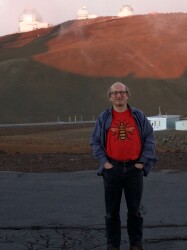BibTex format
@article{Fudamoto:2017:mnras/stx1956,
author = {Fudamoto, Y and Ivison, RJ and Oteo, I and Krips, M and Zhang, Z-Y and Weiss, A and Dannerbauer, H and Omont, A and Chapman, SC and Christensen, L and Arumugam, V and Bertoldi, F and Bremer, M and Clements, DL and Dunne, L and Eales, SA and Greenslade, J and Maddox, S and Martinez-Navajas, P and Michalowski, M and Perez-Fournon, I and Riechers, D and Simpson, JM and Stalder, B and Valiante, E and van, der Werf P},
doi = {mnras/stx1956},
journal = {Monthly Notices of the Royal Astronomical Society},
pages = {2028--2041},
title = {The most distant, luminous, dusty star-forming galaxies: redshifts from NOEMA and ALMA spectral scans},
url = {http://dx.doi.org/10.1093/mnras/stx1956},
volume = {472},
year = {2017}
}

